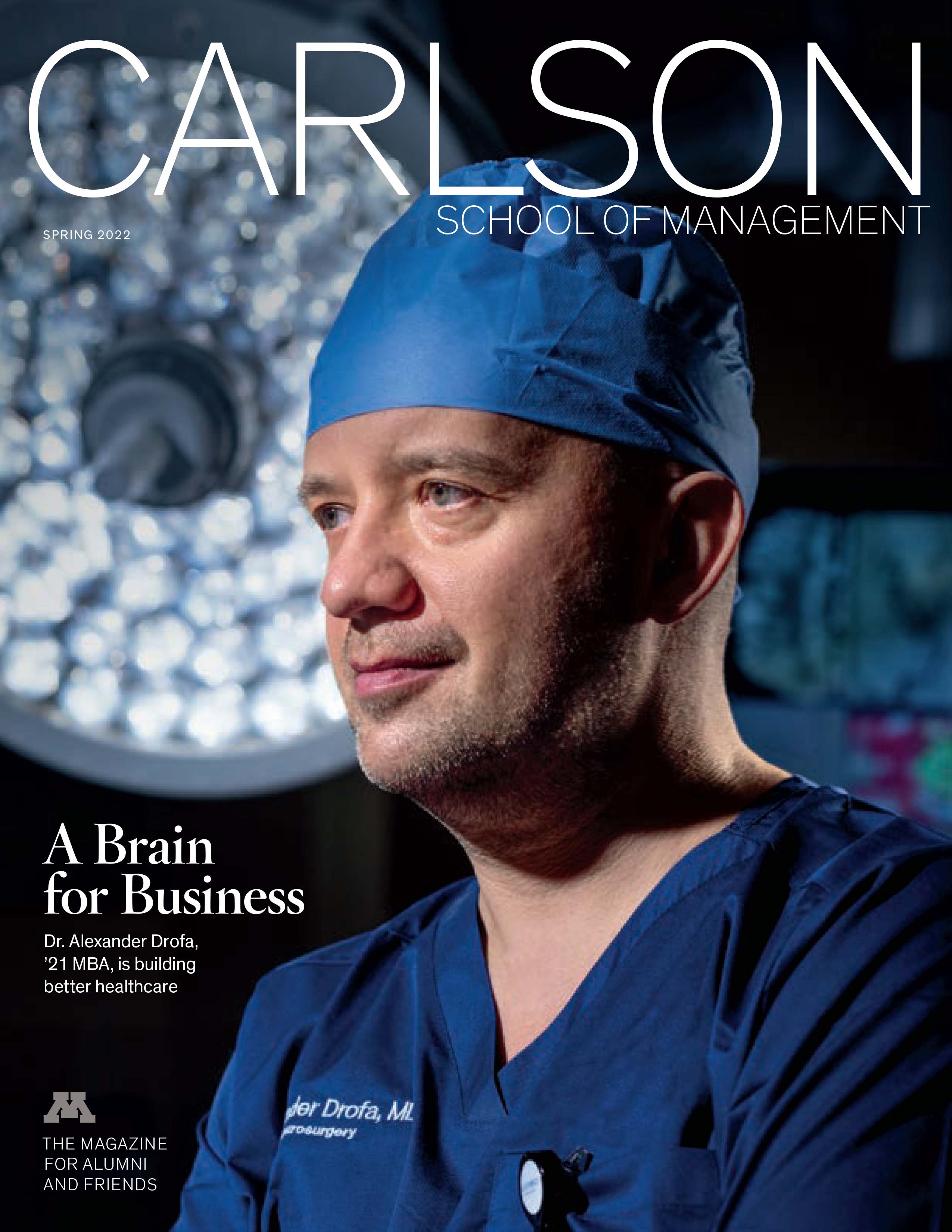
Q&A on COP26: Carlson School’s Susanna Gibbons reflects
Wednesday, November 17, 2021
This month world leaders met at the United Nations climate conference, COP26, to negotiate a deal to reduce greenhouse gas emissions to reduce the impacts of global warming.
Susanna Gibbons, the managing director of the David S. Kidwell Funds Enterprise, was among the University of Minnesota delegation that attended the historic conference in Scotland. She shares her insight from the conference and her views as an investment professional on how policymakers and financial leaders can unite to meet the climate targets.
Q: At the conference, the term “sustainable finance” or “green finance” was often used. What does it mean?
One of the issues that I encountered at COP26 is that policymakers and investment professionals are using the term "sustainable finance" to mean two different things. For policymakers, it is really just a question of funding: How do we get funding for the many different initiatives which will drive the necessary emission reductions? For investment professionals, the question involves expectations of risk and return surrounding those needed investments. I think that has been one of the key holdups in driving investment.
My own view is that sustainable finance is about pricing the negative externalities that accompany any sort of environmental impact, whether it is around carbon emissions, water pollution, or species loss. A negative externality occurs when an entity engages in an activity that causes some harm to others. Negative externalities are really difficult to price because the effects are usually broadly distributed, and they accumulate over time.
Q: In terms of carbon emissions, leaders at COP26 finalized “Article 6,” which determined the rules for international trade of emission reduction units. How does this resonate with your view of sustainable finance?
The agreements appear to move in the direction of pricing those negative externalities. The accounting guidance in particular—allowing an emission reduction project in the U.S. to generate credits that can be purchased by a company operating in Europe—will help provide incentive to a number of important projects. However, the carbon trading agreements alone won't solve everything.
Businesses need to make decisions not just on whether they are required to price external consequences today, but on how those impacts may be felt across time. We have seen time and again—whether it is with asbestos or tobacco—businesses that do not anticipate shifts in society's willingness to accept the consequences will ultimately lose. If prices do not accurately capture some of the significant effects of greenhouse gas emissions on climate change, then the markets will ultimately fail. Carbon markets are moving in the right direction, but most participants do not feel they fully capture the true cost of greenhouse gas emissions.
Successful markets need to be guided by good public policy, and climate change is one of those areas where unpriced externalities are leading to global systematic failure. In order for markets to channel sustainable finance, we must price those costs appropriately.
Q: How can Minnesota businesses incorporate more ways to combat climate change?
I think Minnesota is incredibly well positioned to start developing solutions to climate change, but it will require a significant amount of collaboration—particularly among people who do not always agree.
For example, Minnesota’s agricultural industry is a significant source of greenhouse gas emissions. Simply imposing mandates is not the solution. Instead, it could involve providing regulatory frameworks like the Low Carbon Fuel Standard, which creates an economic incentive for capturing the methane lost through waste products. This in turn allows for cost-sharing so that the farming community doesn’t shoulder the financial burden of the transition to a lower carbon system. The systemic shift would also require investing in biogas distribution systems and continued public funding in electric vehicle charging stations.
The key is to get these separate systems—private agriculture, private finance, municipal waste and sewage, municipal finance, electric and gas utilities—to all move together toward a zero carbon future. The solutions require a degree of coordination and cooperation across systems which I think has rarely been attempted, but which I think Minnesotans are stoic enough to undertake.
Q: What did you learn at the conference that gives you hope?
Climate change messaging should really be about one of excitement over where we could be heading rather than despair over where we currently are heading.
One of the things that impressed me the most at COP26 was the extent of technological innovation that is already available and poised to deliver on our promise of limiting global warming to a threshold of 1.5 degrees Celsius. Business plays a critical role in bringing these technologies to market—there is no solution to climate change that does not involve the business community.
I also see hope from our world’s youth. Young people—not just in our delegation—were clearly frustrated with the slow pace of progress to date, but I think they are forcing the world to take notice and respond; to try and deliver a better world than the one they were born into.
Q: Ultimately, what should people take away from the actions made at COP26?
The clear message from COP26 was that it is time to act. There was no disagreement on that point. We have no more time to waste. In order for our actions to be effective, we need to collaborate in ways that we have not in the past.


